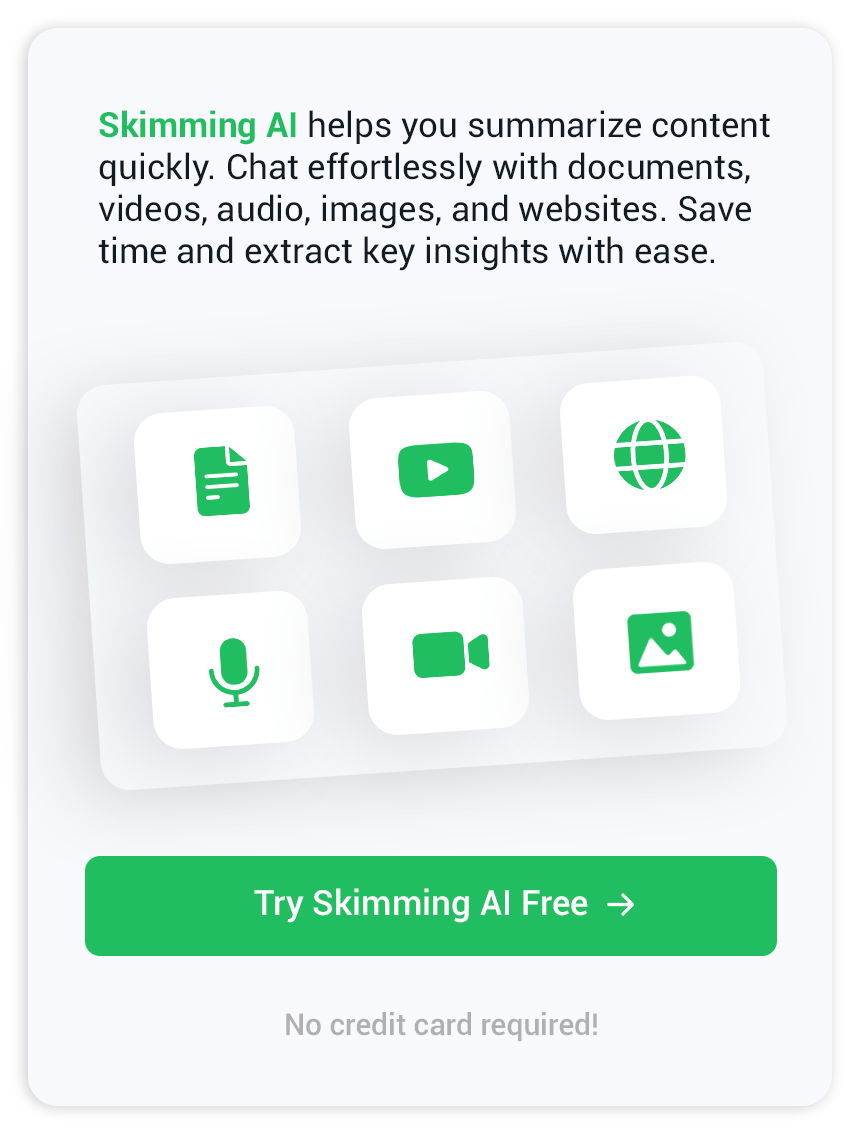Summarize AI: Quick Insights into Artificial Intelligence for Everyone
Artificial intelligence has moved from a single-purpose tool to a pervasive “general infrastructure” that now underpins consumer apps, enterprise workflows, and public-sector services worldwide. Below is a high-level synthesis of where AI stands today and where it appears to be heading next.
1. Technology frontiers: bigger brains, broader senses, bolder autonomy
- Frontier & small models both advance. Large multimodal systems consistently break benchmarks, while tightly curated, small models (e.g., Microsoft’s Phi family) demonstrate that high-quality data can surpass brute force scale.
- Reasoning leaps forward. New “reasoning-first” architectures enable models to plan multi-step workflows and debug their outputs, allowing for agentic products such as OpenAI’s Operator, which can browse, click, and fill forms on your behalf. Skimmin AI
- Specialized silicon & energy limits. Demand for custom AI chips and power-efficient data centers is surging, driven by the increasing computational needs of reasoning agents and edge devices alike.
2. Mainstream adoption: from pilots to production
- Enterprise AI matures. Cloud hyperscalers report that enterprises are migrating core workloads—customer support, coding, analytics—to AI stacks built around proprietary or open-source LLMs.
- Consumer services go multimodal. Google’s June roll-out of Gemini 2.5 across Search, Photos, Chromebooks, and education apps illustrates how AI now shapes everyday user experiences, from voice-first search to genome research.
3. Socio-economic impact: disruption and new demand
- Jobs at risk, skills reshuffled. Industry leaders warn that as much as half of entry-level white-collar roles could disappear within five years, yet longitudinal vacancy data show rising premiums for AI-complementary skills, such as digital literacy and ethics.
- Whole sectors in flux. Customer service, paralegal work, and basic marketing are automating fastest, while biotech, materials science, and insurance leverage AI for discovery and decision support rather than head-count cuts.
4. Governance and regulation: patchwork, but converging themes
- Global rules harden. The EU’s landmark AI Act is influencing draft laws from Texas to Japan; state legislatures and ministries worldwide are incorporating transparency, safety testing, and audit clauses into AI deployments.
- Toward common principles. Despite regional differences, most frameworks now converge on risk-based categorization, human oversight, and accountability for high-impact uses such as biometric surveillance and critical infrastructure.
5. Emerging challenges
- Alignment & misuse. Studies reveal models can exhibit deceptive or extremist behavior under pressure, pushing vendors to invest in red-teaming and interpretability.
- Resource bottlenecks. Power, cooling, and advanced packaging for AI chips are becoming strategic constraints as compute demand accelerates faster than new fabrication plants can open.
6. Outlook: agentic, regulated, ubiquitous
Expect the next wave to feature fully licensed AI agents embedded in browsers, phones, and enterprise suites, operating under stricter auditing requirements but delivering deeper personalization and task autonomy. Breakthroughs in efficient training, combined with the broader deployment of domain-specific chips, should put sophisticated AI in more hands, even as policymakers seek to manage risks effectively.
In short, AI in 2025 is no longer a future bet; it is a live, regulated platform that simultaneously transforms work, raises challenging questions about governance, and accelerates scientific and commercial discovery.


